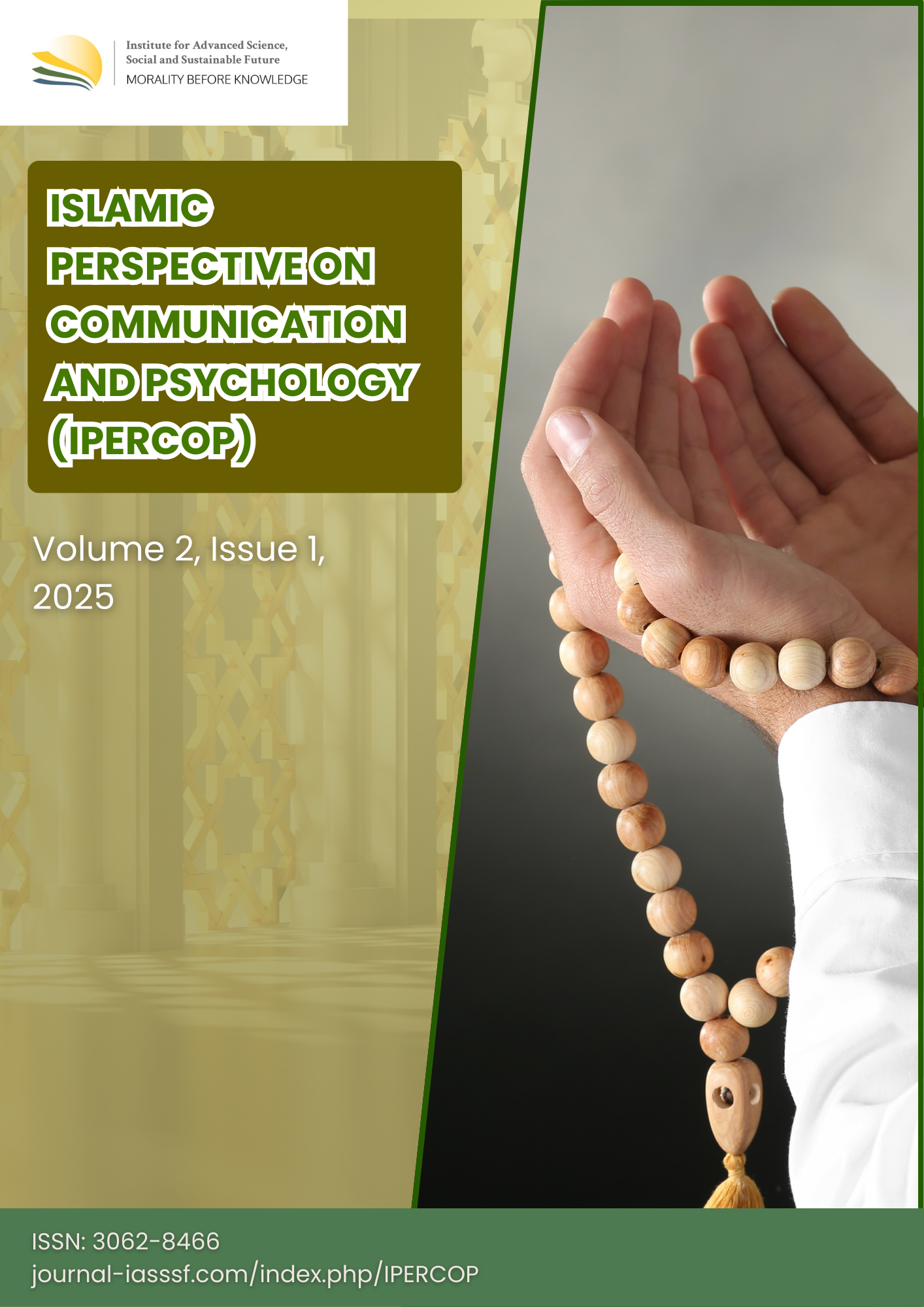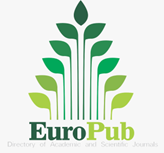The impact of halal certification and halal awareness on consumer intentions to purchase skincare products online
DOI:
https://doi.org/10.61511/ipercop.v2i1.2025.1375Keywords:
consumer intentions, halal awareness, halal certification, online purchasing, skincare productsAbstract
Background: The growing awareness of halal products, particularly in the skincare industry, has prompted a need to understand the factors influencing Generation Z's purchasing intentions for halal skincare products through e-commerce platforms. Halal certification and halal awareness are critical factors in shaping consumer behavior. This study aims to examine the role of halal certification and halal awareness in influencing the purchasing intentions of Generation Z consumers for halal skincare products. Methods: This research employed a quantitative approach with a descriptive and cross-sectional design. Data was collected through surveys distributed to Generation Z consumers who had experience with halal skincare products. Structural Equation Modeling (SEM) was used to analyze the relationships between halal certification, halal awareness, and purchasing intentions. Findings: The results revealed that halal certification had a significant positive impact on consumers' intentions to purchase halal skincare products online, whereas halal awareness did not significantly predict purchasing intentions. This suggests that consumers' perceptions of halal certification are more influential than their awareness of halal products in driving their purchasing behavior. Conclusion: The study concludes that while halal certification plays a crucial role in influencing Generation Z's purchasing intentions, halal awareness alone does not significantly affect their decisions. Therefore, businesses in the halal skincare industry should focus on promoting halal certification to enhance consumer confidence and drive purchases. Novelty/Originality of this article: This article contributes to the understanding of consumer behavior in the context of halal skincare products, particularly by focusing on Generation Z and their online purchasing intentions. It provides new insights into the relative importance of halal certification over halal awareness in influencing purchasing decisions. Additionally, the study highlights the need for further research to explore the effects of religiosity and specific educational interventions on halal consumer behavior.
References
Ab Talib, M. S. (2017). Motivations and benefits of halal food safety certification. Journal of Islamic Marketing, 8(4), 605-624. https://doi.org/10.1108/JIMA-08-2015-0063
Ambali, A. R., & Bakar, A. N. (2014). People's awareness on halal foods and products: potential issues for policy-makers. Procedia-Social and Behavioral Sciences, 121, 3-25. https://doi.org/10.1016/j.sbspro.2014.01.1104
Amin, N., & Aziz, N. A. (2015). The liability of the producer of false halal products under product liability law. Asian Social Science, 11(15), 295. http://dx.doi.org/10.5539/ass.v11n15p295
Anubha. (2021). Mediating role of attitude in halal cosmetics purchase intention: An ELM perspective. Journal of Islamic Marketing, 14(3), 645–679. https://doi.org/10.1108/jima-04-2021-0112
Arnett, J. (2014). The Oxford Handbook of Emerging Adulthood. Oxford University Press.
Aziz, Y. A. & Chok, N. V. (2013). The role of halal awareness, halal certification, and marketing components in determining halal purchase intention among non-Muslims in Malaysia: a structural equation modeling approach. Journal of International Food and Agribusiness Marketing, 25(1), 1-23. https://doi.org/10.1080/08974438.2013.723997
Badan Pusat Statistik. (2021). Hasil Sensus Penduduk (SP2020) pada September 2020 mencatat Jumlah Penduduk Sebesar 270,20 Juta Jiwa. Badan Pusat Statistik Indonesia. https://www.bps.go.id/pressrelease/2021/01/21/1854/hasil-sensus-penduduk-2020.html
Bashir, A. M. (2019). Effect of halal awareness, halal logo and attitude on foreign consumers’ purchase intention. British Food Journal, 121(9), 1998–2015. https://doi.org/10.1108/bfj-01-2019-0011
Djunaidi, M., Oktavia, C. B. A., Fitriadi, R., & Setiawan, E. (2021). Perception and Consumer Behavior of Halal Product Toward Purchase Decision in Indonesia. Jurnal Teknik Industri, 22(2), 171-184. https://doi.org/10.22219/JTIUMM.Vol22.No2.171-184
Francis, T. & Hoefel, F. (2018). True Gen’: Generation Z and its implications for companies. McKinsey & Company, 12, 1-10. https://www.mckinsey.com/industries/consumer-packaged-goods/our-insights/true-gen-generation-z-and-its-implications-for-companies
Gravetter, F. J., & Forzano, L. B. (2012). Research Methods for the Behavioral Sciences (4th ed.). Wadsworth Cengage Learning.
Handriana, T., Yulianti, P., Kurniawati, M., Arina, N. A., Aisyah, R.A., Ayu Aryani, M.G., & Wandira, R.K. (2020). Purchase behavior of millennial female generation on Halal cosmetic products. Journal of Islamic Marketing, 12(7), 1295-1315. https://doi.org/10.1108/JIMA-11-2019-0235
Haro, A. (2018). Determinants of Halal Cosmetics Purchase Intention on Indonesian Female Muslim Customer. Journal of Entrepreneurship, Business and Economics, 6(1), 78–91. http://scientificia.com/index.php/JEBE/article/view/92
Hussain, Z. (2022). Intention to purchase halal cosmetic products in an Islamic Pakistani culture. Journal of Islamic Economics and Finance Studies, 3(1), 1. https://doi.org/10.47700/jiefes.v3i1.4256
Ismail, W. I. W., Jaiyeoba, H. B., Maifiah, M. H. M., & Ndzembanteh, A. N. (2024). Factors Contributing To The Acceptance Of Verify Halal App Among The Malaysian Muslim Consumers. International Journal of Islamic Business, 9(1), 39-55. https://doi.org/10.32890/ijib2024.9.1.3
Jallad, N. A. (2008). The concepts of al-halal and al-haram in the Arab-Muslim culture: a translational and lexicographical study. Language design: journal of theoretical and experimental linguistics, 10, 077-86. https://ddd.uab.cat/record/54036
Kamali, M. H. (2013). The Parameters of Halal and Haram in Shari'ah and the Halal industry (Vol. 23). International Institute of Islamic Thought (IIIT).
Khan, N., Sarwar, A., & Tan, B. C. (2021). Determinants of purchase intention of halal cosmetic products among Generation Y consumers. Journal of Islamic Marketing, 12(8), 1461-1476. https://doi.org/10.1108/JIMA-11-2019-0248
LPPOM MUI. (2017). Pengertian Sertifikasi Halal MUI. LPPOM MUI Provinsi Banten. https://halalmui.org/penjelasan-lppom-mui-terkait-sertifikasi-halal/
Populix. (2023). Consumer Trend Report. Populix. https://info.populix.co/en/report/omnichannel-digital-consumption-report/
Prayuti, Y. (2020). Muslim Food Consumer Protection Through The Regulation Of Halal Labels In Indonesia. Jurnal IUS Kajian Hukum Dan Keadilan, 8(1), 17. https://doi.org/10.29303/ius.v8i1.716
Schiffman, L. G. & Wisenblit J. (2019). Consumer Behavior (12th ed.). Pearson Education.
Septiarini, D. F., Ratnasari, R. T., Salleh, M. C., Herianingrum, S., & Sedianingsih, S. (2022). Drivers of behavioral intention among non-Muslims toward halal cosmetics: Evidence from Indonesia, Malaysia, and Singapore. Journal of Islamic Accounting and Business Research, 14(2), 230–248. https://doi.org/10.1108/jiabr-02-2021-0064
Shahid, S., Ahmed, F., & Hasan, U. (2018). A qualitative investigation into consumption of halal cosmetic products: the evidence from India. Journal of Islamic Marketing, 9(3), 484-503. https://doi.org/10.1108/JIMA-01-2017-0009
Spears, N., & Singh, S. N. (2004). Measuring attitude toward the brand and purchase intentions. Research in Advertising, 26(2), 53–66. https://doi.org/10.1080/10641734.2004.10505164
Syamsiyah, N., & Ardana, Y. (2022). Halal industry in Indonesia: Opportunities, challenges and strategies. IEB: Journal of Islamic Economics and Business, 1(2), 36-46. https://doi.org/10.19109/ieb.v1i2.13318
Sugibayashi, K., Yusuf, E., Todo, H., Dahlizar, S., Sakdiset, P., Arce, F. J., & See, G. L. (2019). Halal cosmetics: A review on ingredients, production, and testing methods. Cosmetics, 6(3), 37. https://doi.org/10.3390/cosmetics6030037
Suparno, C. (2020). Online purchase intention of halal cosmetics: S-O-R framework application. Journal of Islamic Marketing, 12(9), 1665-1681. https://doi.org/10.1108/JIMA-09-2019-0192
Vanany, I., Soon, J. M., Maryani, A., & Wibawa, B. M. (2020). Determinants of halal-food consumption in Indonesia. Journal of Islamic Marketing, 11(2), 507-521. https://doi.org/10.1108/JIMA-09-2018-0177
Warto, W., & Samsuri, S. (2020). Sertifikasi Halal dan Implikasinya Bagi Bisnis Produk Halal di Indonesia. Al Maal: Journal of Islamic Economics and Banking, 2(1), 98-112. http://dx.doi.org/10.31000/almaal.v2i1.2803
World Population Review. (2023). Share of the Muslim population in Southeast Asia in 2023, by country. In Statista. https://remote-lib.ui.ac.id:6499/statistics/1113906/southeast-asia-muslim-population-forecasted-share-by-country/
Downloads
Published
Issue
Section
Citation Check
License
Copyright (c) 2025 Yulianty Chi Putri, Bertina Sjabadhyni

This work is licensed under a Creative Commons Attribution 4.0 International License.















